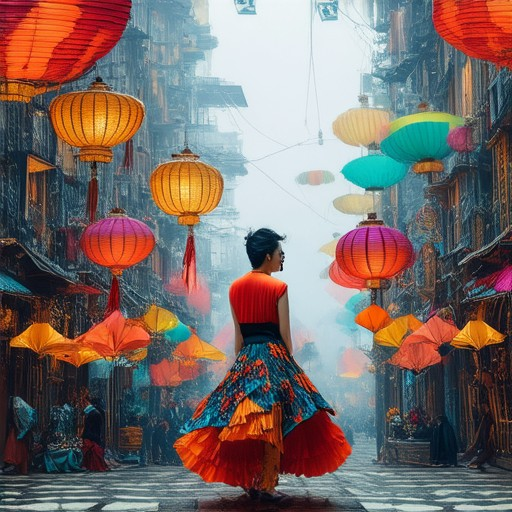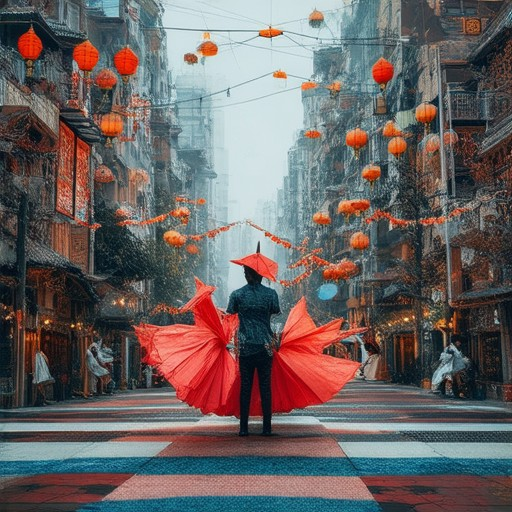Cultural travel is more than just visiting a new place; it’s about immersing yourself in the heart of a destination, discovering its traditions, history, and art, and walking in the footsteps of those who have shaped its identity. Whether you’re exploring ancient ruins, savoring authentic cuisine, or experiencing local festivals, cultural travel offers a transformative way to connect with the world around you. It’s a journey that can deepen your understanding, inspire personal growth, and create lasting memories.
Key Takeaways
– Plan Thoughtfully: Research local customs, learn basic phrases, and pack respectfully to ensure a smooth and meaningful cultural immersion.
– Engage Locally: Connect with locals through guided tours, explore cultural landmarks, and celebrate traditions to deepen your understanding.
– Hands-On Experiences: Participate in workshops, volunteer locally, and stay in homestays to live like a native and build lasting connections.
– Capture Memories: Document your journey through photos, journals, and videos to preserve and share your cultural adventure.
– Stay Involved: Continue engaging with the culture post-trip and support preservation efforts to sustain your connection to the world’s diverse heritage.
– Create Unique Stories: From festivals like Mardi Gras to interactive experiences, craft memorable moments that reflect the essence of the culture you’re immersed in.

Cultural Travel Explained
Cultural travel is a unique form of travel that focuses on immersing oneself in the local culture of a destination. Unlike traditional tourism, which often involves seeing sights and moving on, cultural travel prioritizes meaningful connections and authentic experiences. It’s about stepping away from your comfort zone and embracing the traditions, customs, and daily life of the places you visit.
Key Components of Cultural Travel
- Immersion : Cultural travelers often seek to live like locals, participating in daily activities such as attending festivals, joining community events, or learning traditional skills.
- Authenticity : The emphasis is on experiencing the real side of a culture, rather than just visiting famous landmarks.
- Connection : Cultural travel fosters deeper connections with people and places, often leading to cross-cultural understanding and empathy.
- Sustainability : Many cultural travelers aim to minimize their environmental impact while exploring, choosing eco-friendly accommodations and practices.
Why Engage in Cultural Travel?
- Growth and Learning : Cultural travel offers opportunities to learn new languages, traditions, and ways of thinking.
- Personal Connection : It allows individuals to build meaningful relationships and create memories that go beyond typical tourist experiences.
- Global Understanding : By interacting with diverse cultures, travelers gain insight into different lifestyles and societal structures.
How to Plan a Cultural Travel Experience
- Research : Learn about the local customs, language, and cultural norms before visiting.
- Engage Locally : Participate in community activities, take classes, or volunteer to immerse yourself in the culture.
- Stay Connected : Share your journey online or through journals to connect with others who share your passion for cultural exploration.
Beyond the Basics
For those looking to take their cultural travels further, platforms like Bending Borders offer unique insights and stories from around the globe. Their blog and storytelling initiatives highlight the hidden gems of international travel, providing inspiration and practical tips for anyone eager to explore differently.
By embracing cultural travel, you not only enrich your own life but also contribute to a greater understanding of the world’s diverse heritage. Whether it’s through food, art, or traditions, cultural travel is a transformative way to see the world in a whole new light.
The 5 Types of Cultural Tourism
- Historical/Cultural Heritage Tourism: This type focuses on visiting sites with historical significance, such as ancient ruins, museums, and landmarks. It allows travelers to connect with the past and understand the cultural evolution of a region.
- Celebratory Tourism: Involves participating in local festivals, rituals, and events. This form of tourism provides insight into the customs, traditions, and social practices of a community.
- Art and Creative Tourism: Centers around engagement with artistic expressions, including visits to galleries, art festivals, and creative workshops. It caters to those interested in art, design, and craftsmanship.
- Culinary Tourism: Focuses on exploring the local cuisine, including cooking classes, food tastings, and culinary experiences. This type highlights the cultural significance of food and its preparation methods.
- Indigenous Tourism: Provides opportunities to experience the traditional lifestyles of indigenous communities. This may include cultural performances, storytelling, and immersive experiences with local customs and nature.
For more detailed information on these types and related travel experiences, explore our curated guides and destination features at Bending Borders .

Example of a Cultural Tourist
A cultural tourist is someone who travels with the primary purpose of experiencing and immersed themselves in the cultural heritage, traditions, and customs of a particular destination. Here are some examples:
- Archaeology Enthusiast: A person who travels to explore ancient ruins, historical sites, and museums to gain deeper insight into the history and civilization of a region.
- Cultural Festival Attendee: Someone who visits a location specifically to attend cultural festivals, celebrations, or events that showcase traditional music, dance, food, and customs.
- Study Abroad Student: A student who moves to a foreign country to study and experience the local culture, traditions, and lifestyle as part of their educational journey.
- Culinary Explorer: A traveler who seeks to understand and experience the local cuisine, visiting markets, cooking classes, and restaurants to connect with the culture through food.
- Adventure Seeker: A person who participates in cultural activities such as hiking, biking, or exploring lesser-known historical sites to connect with the natural and cultural landscapes.

How to Plan a Culturally Immersive Travel Experience
To truly immerse yourself in a new culture, careful planning is essential. Here’s a comprehensive guide to crafting an unforgettable culturally immersive travel experience:
1. Pre-Trip Preparation
- Research Local Customs: Investigate cultural practices, traditions, and etiquette. Resources like Cultural Travel Guide can provide valuable insights.
- Learn Basic Phrases: Familiarize yourself with local languages. Apps like Duolingo can help you get started.
- Pack Appropriately: Respect local dress codes and pack comfortable, versatile clothing. Consider Gap Year Travel guides for tips on sustainable packing.
2. Arrival and Initial Exploration
- Engage with Locals: Join guided tours operated by companies like Intrepid Travel to connect with locals and gain insider knowledge.
- Immerse in Art and History: Visit museums and cultural landmarks. Use resources from Smithsonian Magazine to enrich your visit.
- Celebrate Local Traditions: Attend festivals or events. Websites like Eventbrite can help you find cultural happenings.
3. Deepening Connections
- Participate in Workshops: Enroll in cooking classes or traditional crafts workshops. Platforms like Airbnb Experiences offer unique opportunities.
- Volunteer Locally: Spend time in community projects. Organizations like World Packers connect volunteers with meaningful opportunities.
- Stay in Homestays: Live like a local by booking stays through platforms like Airbnb . This offers authentic insights and cultural exchange.
4. Capture and Reflect
- Document Your Journey: Take photos, journal, and record videos. This helps in preserving memories and sharing your experience later.
- Connect with Others Back Home: Share your story through blogs, social media, or presentations. Inspire others by showcasing your cultural adventure.
5. Sustain the Connection
- Stay Involved Post-Trip: Continue engaging with the culture through art, music, or cuisine. Explore local communities online or locally.
- Support Cultural Preservation: Donate to organizations working on cultural conservation. Learn more via UNESCO .
By thoughtfully planning and executing your travel experience, you can create a memorable and culturally rich journey that resonates long after you return home.
Cultural Experience Example
A cultural experience encompasses activities that allow individuals to engage with and understand distinct traditions, beliefs, and customs. One notable example is Mardi Gras in New Orleans, USA. This vibrant celebration combines elements of Catholicism, French colonial history, and African influences, resulting in a unique and colorful event. Attendees participate in parades, wear elaborate costumes and masks, and enjoy traditional foods like king cake and gumbo. Mardi Gras is not just a festive occasion but also a reflection of the city’s rich cultural heritage, making it a quintessential example of a cultural experience.

How to Start an Immersive Experience
To begin crafting an immersive experience, consider the following steps:
- Define Your Purpose : Determine the objective of your immersive experience. Whether it’s for entertainment, education, therapy, or storytelling, clarity on intent will guide your approach.
- Set the Stage : Create a dedicated space or environment that aligns with your theme. Use tools like VR headsets, surround sound systems, or specialized lighting to immerse users in the moment.
- Develop a Cohesive Narrative : Craft a compelling story or theme that serves as the backbone of your experience. Use techniques like storyboarding to outline key scenes and ensure continuity.
- Incorporate Interactive Elements : Design opportunities for user participation, such as decision-making moments or puzzles. This enhances engagement and personalizes the journey.
- Leverage Technology : Utilize advancements like motion capture systems or real-time tracking to heighten realism. Consider haptic feedback devices for more immersive tactile experiences.
- Evaluate and Refine : Gather feedback through surveys or biometric data to assess immersion levels. Iterate based on insights to enhance user engagement and satisfaction.
- Ensure Safety : Implement safety measures, especially in physical spaces, to protect participants and maintain a secure environment.
By following these steps, you can create an immersive experience that captivates and transports users, offering a memorable and impactful journey.




0 Comments